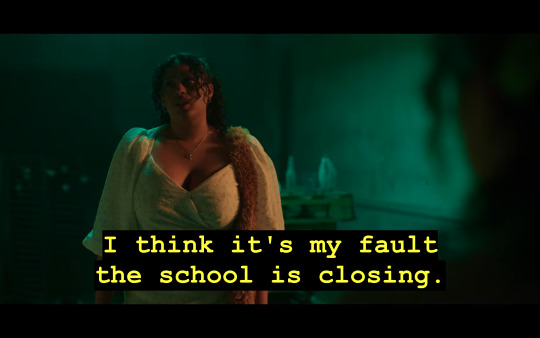#women and girls with asd
Text
Women and Girls with Autism Spectrum Disorder: Understanding Life Experiences from Early Childhood to Old Age (Sarah Hendrickx, 2015)
“Interestingly, one of the findings from research into sex differences in children with autism was that girls with autism do not have the same stereotypical, rigid interests as boys.
My research certainly found that repetitive and restricted behaviours were completely the norm for the girls studied but that topic type differed.
A small number of activities came up time and time again as being favourites for repetition: watching the same TV/video/DVD programme (e.g., Mary Poppins, Postman Pat, Peppa Pig), reading the same book (e.g., an Enid Blyton book, Jane Eyre), listening to the same song/tape.
The scripts and lyrics of their favourite shows, books and songs were all known verbatim by the children. Collecting and sorting specific objects were also mentioned. (…)
Boys’ interests tend to be object-based – trains, dinosaurs, space – while girls’ interests tend to be people- or animal-based – soap operas, fictional characters, animals and celebrities.
This qualitative difference can explain why girls’ behaviour may not be noted as being unusual, due to the ‘typical girl’ nature of their interests.
Whereas a boy who quotes endless facts about ancient history, rather than playing football with his peers, may be flagged as atypical, a girl who obsesses about a pop star would not necessarily be seen in the same way.
The difference between the interests of a girl with autism and a typical child is the narrowness of the topic and the intensity of the interest.
These girls with ASD have single-track focus; they do not think or speak of anything other than their passion for an extended period.
They may have extensive knowledge of their subject but have more of a factual interest than a desire to live it out.
A child who speaks of nothing but horses may not actually want a horse, but just enjoys the facts about horses.
I believe that the interest provides the same outcomes for both girls and boys on the autism spectrum; once immersed in your subject of interest, there is a predictability and escape from the chaotic real world.
Knowing everything about a subject makes it known and provides a sanctuary from the anxiety and stress of a feeling of not knowing what’s going to happen most of the time.
Animals in general are a popular interest as they are far easier to deal with than people for many females with autism: their intentions are clear (no hidden agendas), their non-verbal language is minimal (cats don’t pull too many facial expressions), their needs are easily identified and their attachment and affection are unconditional and unchanging.
Some girls identify so strongly with animals that they imagine or wish themselves to be one.”
607 notes
·
View notes
Text
Tell me your stories :)) I’d love to know more. My sister is three years younger and doesn’t have the same issues. As much as I want to leave my house, I couldn’t cross the road apne until I was 14 and I couldn’t take the train alone until I was 16, and even then on practiced routes. Did anyone else have struggles like this?
#autism#autistic#questioning autistic#autistic woman#actually autistic#autistic women#autistic girl#autistic adult#late diagnosed autistic#autistic things#autistic community#poll#asd
156 notes
·
View notes
Text


Good VS Bad Autism Tattoos
Many people in the autistic community view the puzzle piece as a hate symbol because it implies we're not whole people. We're missing pieces and we're problems that need to be solved. Which is why a lot of us gravitate towards the infinity sign instead! It comes in both rainbow (for neurodiversity) and gold! As the chemical symbol for gold is Au.
#autism#autistic#autism awareness#neurodivergent#audhd#neurodiversity#actually autistic#autistic things#autistic artist#autistic adult#autistic experiences#asd#girls with autism#adults with autism#women with autism#autism spectrum#autism tattoo#autism tattoos#invisible disability#disability#disabled#disabled community#disabled artist#actually disabled#disability pride#chronic disability
38 notes
·
View notes
Text

#autism community#being autistic#autism spectrum#autism things#actually audhd#actually neurodiverse#actually autistic#actually asd#neuroaffirming#neurodiversesquad#actually neurodivergent#neurospicy#autistic community#autistic women#autistic girl#autistic#autistic adult#autistic things#autistic experiences#autistic spectrum#autistic masking#masking#unmasking#neurodiverse#neurodivergent#neurodiversity#autism acceptance#autism awareness#neurosparkly#actuallyautistic
21 notes
·
View notes
Text
i don't think i grieve right.
a few weeks ago, my dog was put down at the age of ten after suffering from cancer. i have cried twice. once a few days before, the second whilst he was being put to sleep. i stopped crying a few minutes after and i haven't since. i miss him, but i am not sad all the time. my heart aches, but only sometimes. both of my mothers cried for days after, barely moved or did anything, just sat and spoke about him until the tears came again. their grief was more poetic then mine, i couldn't understand how they were so physically taken by this. it confused me, almost irritated me. how physically upset they were. how i couldn't grieve with them because i couldn't keep up. like they felt more love then i did. they still tear up if they speak about him for too long. but i'm not like that. for years i was so scared about how i would be once he died, as he was there for just over half of my life and saw so much of it, but i am scared how unaffected i seem to be.
i feel like i am waiting to be hit by a freight train, waiting for the reality and the grief to splatter me and smash me into pieces. those big feelings terrify me, but the lack of them scare me more.
to clarify, i did love my dog, as what i am writing seems to imply the opposite. when i stroke and hug my other two dogs, their coarse coats scratch my skin and makes it itch and for a second, i yearn for my merlin to come back. i want to cuddle his warm, soft fur whilst he rests his head on my knee or my shoulder, his eyes fluttering closed as he falls asleep. kiss his head. scratch the bridge of his nose and the one spot on his chin that made him rabbit kick. he is etched into my heart and soul forever but i can't be sad in the way i should be. the grief doesn't paralyse me or take the oxygen from my lungs, its like i rarely ever feel it. it's there, but it rarely makes itself known to me.
my parents won't understand. either they will jokingly call me lucky, and i will feel ashamed for my lack of tears, or they will judge me, and think i never cared as deeply as they did. and i am scared that could be the case. my voice doesn't even waver whilst talking about him. his ashes and pawprints came home today, and i spoke about it casually whilst my parents were choked up. i felt like a freak and a robot. i could feel them judging me, calculating my sadness and judging it against theirs. i was too. i don't think i grieve right. something feels off.
#grief#dealing with grief#grieving#pet grief#guilt#autism#asd#girls with autism#writing#my writing#women writers#writer#writers on tumblr#random#rant#unintelligible rants#autistic women
64 notes
·
View notes
Text

Key Takeaways
New research shows that girls with autism spectrum disorder (ASD) appear to have more genetic mutations than boys with ASD. Girls also show differences in brain structure and function.
Girls with autism may have changes in a different area of the brain (the striatum) than boys with autism (who typically have changes in the brain's temporal lobe).
The study's findings could help improve diagnoses of ASD in girls, who are less likely than boys to be diagnosed.

Research has shown that autism spectrum disorder (ASD) looks different for boys and girls—not just in terms of symptoms, but in terms of brain structure and genetic changes that drive the condition.
Diagnostic disparities in ASD mean that many girls with the condition go undiagnosed, or a diagnosis does not come until they are adults.
Researchers hope that they will eventually find an accurate biomarker that could help improve how ASD is diagnosed and treated to ensure that everyone with the condition can receive support.
11 notes
·
View notes
Text
I'm not autistic enough to appear autistic. I'm not normal enough to appear normal.
I'm just the weird girl that talks to much or just don't talk at all.
I'm the autistic that people don't want around.
I am lovable from a distance, sweet and charming until they get too close, and they realize I'm sensitive so they have to walk on eggshells around me.
The closer they get, the more they see that too much sensory causes meltdowns and that sometimes I can be a bitch because I don't want them to talk to me.
Because I don't want to be touch.
Sometimes I'm too weird because all I want to do is talk.
And I talk way too much about things I like, and then to become bored and angry when listening to things I don't like.
I'm loveable from a distance I'm people pleaser because I smile often and laugh easily.
I care about others, until I care too deeply, too quickly and I scare them away.
I'm loveable until they get to know me and then I'm too much.
I'm weird and sensitive, selfish and entitled.
I'm manipulative and ungrateful and disrespect.
I'm a crybaby and too intense..
I'm not normal enough to fit in but not autistic enough to "excuse" my behaviour.
They don't believe me when I say I'm autistic. So it doesn't give them an explanation on why I growl when my flow is interrupted or why I complain when the systems, the plans are changed.
It doesn't explayn why certain clothes, textures, pressures cause meltdowns and anger.
Or why I talk really loud when I get excited, or why I get quiet and upset when I told I meed to lower the volume just a little bit.
I see other autistics around me celebrated and loved of their differences and I feel like I got stuck with all the traits that make me unlovable.
And got none of the traits people like and admire.
Even in the autistic community, I don't feel like I'm autistic enough and it's so incredibly hard to feel like I don't fit in whit even with the other "outcasts and misfits"
#vent post#actually autistic#autistic adult#autistic problems#autistic women#my autism#asd#asd life#tism tag#autism spectrum disorder#autism vent#vent tag#autistic community#autistic girl#i have autism#autistic feels
48 notes
·
View notes
Text
autistic woman who never gets properly diagnosed because her special interest is social interactions and acting and being able to reply to conversations "the right way" depending on the context and told that despite expending exorbitant amounts of effort, the fact that she can do it (after intensive study), means she does not have social difficulties needed for the diagnosis and should stop faking it.
50 notes
·
View notes
Text
Camouflaging in Adults with Autism Spectrum Conditions _
Hello everyone, I am currently a student at Korea University taking a class called Neurodiversity. Attached is an article we talked about in class and I wanted to share my opinion on it. I would love to hear your opinion on this! <3
This article discusses social camouflaging in adults with ASC (Autism Spectrum Conditions). It was found that people camouflage for two main reasons: assimilation and connection. Individuals may want to make friends or they are caused due to societies demands on how they should act and be. This is mainly seen in females, I believe society's standards on women are higher regarding how they should behave and present themselves. This creates exhaustion mentally, and physically, which could lead to burnout. This is also why women are more likely to be undiagnosed because they 'fit in' with society more than others. Additionally, when women try to get diagnosed as an adult, it could even be a more difficult process. They have masked their entire life and might not even meet the criteria. It can be difficult to unmask when it is the only thing you have known how to do your entire life. How do you operate authentically and truly when all you have done is copy others' actions, and facial expressions, to every second of your life?
This article confirmed my knowledge of camouflaging, especially in girls. I get the majority of my ASD/ASC information from you all directly, your personal experiences and stories. It was quite interesting to see similar thoughts and experiences in an article.
The article did not mention specific effects of camouflaging such as becoming non-speaking, burnout, sensory overload, etc. Moreso mainly exhaustion and fatigue (unless I missed something).
Anyways, I would love to hear your opinions on masking. What is the result of masking? (meltdowns, burnout, etc.) How you deal with the heavy load of it when it gets too overwhelming, your thoughts on the article, and any comments are welcome!
Thank you for your time <3
#autism#ASD#ASC#neurodivergent#masking#autism in women#autism in girls#undiagnosed autistic#autistic#autistic culture#autistic things#autistic feels#autistic spectrum#sensory issues#being autistic#autistic problems#meltdown#nonspeaking#autistic meltdown#autistic burnout#actually autistic
89 notes
·
View notes
Text
no bc i went to my psychiatrist fully prepared to bring up ASD like my therapist asked me to, wrote like 3 different lists to explain myself and was super super nervous…but as soon as i started he just cut me off and said “you have it. you’re 100% without a doubt on the autism spectrum”
AND HERE’S ME THINKING I’M SOO GOOD AT MASKING LOL that was very humbling 😶 he said i’ve known this for years, you fit criteria in all the categories
#asd#autism#autism spectrum disorder#how did everyone just ??? know? EXCEPT ME#i guess because i’m a girl i thought my symptoms weren’t stereotypical enough#cause women have a hard time getting diagnosis#actually autistic#not used that before 😳
27 notes
·
View notes
Text








Women and Girls with Autism Spectrum Disorder: Understanding Life Experiences from Early Childhood to Old Age (Sarah Hendrickx, 2015)
"Something that often comes up in my conversations with women with autism about the causes of their frustrations is why people say they will do something and then don’t do it or do something else.
The discrepancy between people’s words and actions is not only stressful due to the change in expectations that has to be processed (hard work), but also because it is not true and therefore illogical.
There is nothing that stresses a person with autism more than a lack of logic or an unnecessary lie – we find it baffling.
The unanswerable question of autism, which is always accompanied by a creased forehead, is: ‘Why do people do that?’"



"Enjoying an intense interest in one or more subjects is a core element in the profile of autism, but differences in the specifics of this profile are noted between boys and girls.
Boys’ interests tend to be object-based – trains, dinosaurs, space – while girls’ interests tend to be people- or animal-based – soap operas, fictional characters, animals and celebrities.
This qualitative difference can explain why girls’ behaviour may not be noted as being unusual, due to the ‘typical girl’ nature of their interests. (…)
Knowing everything about a subject makes it known and provides a sanctuary from the anxiety and stress of a feeling of not knowing what’s going to happen most of the time.
Animals in general are a popular interest as they are far easier to deal with than people for many females with autism: their intentions are clear (no hidden agendas), their non-verbal language is minimal (cats don’t pull too many facial expressions), their needs are easily identified and their attachment and affection are unconditional and unchanging.
Some girls identify so strongly with animals that they imagine or wish themselves to be one."
Episodes: Young Royals 3x06 and 3x02
17 notes
·
View notes
Text









i've said it before & i'll say it again. y'all are sleeping on this chick. LOOK AT HER. <33
#this is a b.nha girl / women stan blog#giving them ladies all the love since 2020 bby<3#and before but thats how old this blog is#JESUS I NEED TO REMAKE#asd#kfjbn#but yeah#i miss jirou and you all should love on her more :D#m: kyouka jirou#& its time for me to shine. / kyouka jirou.#out of chocolate. / ooc.
17 notes
·
View notes
Text


Good VS Bad Autism Tattoos
Many people in the autistic community view the puzzle piece as a hate symbol because it implies we're not whole people. We're missing pieces and we're problems that need to be solved. Which is why a lot of us gravitate towards the infinity sign instead! It comes in both rainbow (for neurodiversity) and gold! As the chemical symbol for gold is Au.
#autism#neurodiverse#neurodivergent#neurodiversity#disability pride#disability#disabled#actually disabled#disabled community#invisible disability#asd#autistic#audhd#actually autistic#actuallyautistic#autistic things#autistic artist#autistic adult#autistic experiences#adults with autism#women with autism#girls with autism#aspie#aspies#aspergers#self diagnosed#self diagnosed autism
35 notes
·
View notes
Text
30 Flavours of Autism: Grab a Spoon and Help Yourself

Welcome to part one of my series, Flavours of Autism, and my big, feisty feelings around the gatekeeping of autism diagnoses.
Depending on where you live, you’re forced to pay an inordinate sum for a private assessment, wait years for a publicly funded one, or worse, both. Some adults, like me, get lucky and skip the line due to a preexisting relationship with a qualified diagnostician. Unlike most kids, some get lucky and skip the line because their school already has one.
But what breaks my heart entirely is when autistic folks arrive for their assessment and fail to receive diagnoses due to a lack of knowledge and language to describe their lived experience. Not to mention that many symptoms of autism can interfere with the assessment process — and don’t get me started on how gender influences the likelihood of receiving a diagnosis and accurate assessment.
In my most professional, clinical opinion, I consider the process an absolutely abysmal bunch of rotten bananas — and sadly, my hands are mostly tied as a Registered Clinical Counsellor in BC, Canada. RCCs cannot diagnose, but we can provide specialized therapy and recognize, refer, and support clients throughout their journey. Not-so-recently, I realized this isn’t enough to bridge the gap, but through the wise words of the millennial icon, Junie B. Jones, I can assure you “that didn’t even faze me.”
I remain unphased because it is within my scope to disseminate and share what I know and continue to learn. I hope anyone encountering my content can use it to support themselves or others in preparing for their autism assessment. It’s overflowing with all the psychobabble and clinical jargon that might stand between them and an accurate assessment. Education is power, baby.
My words, this article, and the Flavours of Autism series are not a substitute for professional mental health advice or support, such as connecting directly with a psychotherapist or psychiatrist. Moreover, while it’s important to honour and explore your lived experience, reading and resonating with this article does not diagnose you or anyone else with autism, nor mean you or anyone else is autistic.

1. Monotropism
Monotropism refers to an intense focus on one interest or task at a time. Autistic individuals with monotropism may find it difficult to switch their attention between tasks. This deep, single-minded concentration can lead to exceptional expertise in their area of interest. However, it can also cause challenges when adapting to new activities or demands. Understanding monotropism can help create supportive environments that honour their focus while gently encouraging flexibility.
2. Echolalia
Echolalia involves the repetition of words or phrases spoken by others. This can be immediate, where the repetition happens right after hearing the words, or delayed, occurring hours or even days later. Echolalia is often a way for autistic individuals to process language, learn speech patterns, or communicate their needs. Recognizing echolalia as a meaningful communication attempt rather than mere imitation is important.
3. Idiosyncratic Phrases
Autistic individuals might use unique or unconventional phrases that hold personal meaning. These idiosyncratic phrases can confuse others but are significant to the individual. They may stem from specific interests, favourite media, or personal experiences. Understanding these phrases requires patience and a willingness to learn their context and significance.
4. Issues with Interoception
Interoception is the ability to sense internal bodily states like hunger, thirst, or temperature. Autistic individuals might struggle with interoception, making it hard to recognize and respond to their bodily needs. Interception issues can also lead to increased sensitivity to bodily states. This can lead to challenges in maintaining regular eating, drinking, and temperature regulation. Awareness and support in recognizing these internal cues are crucial for well-being.
5. Issues with the Vestibular System
The vestibular system, responsible for balance and spatial orientation, can be problematic for some autistic individuals. Difficulties with the vestibular system may result in coordination, balance, and movement challenges. This can affect daily activities like walking, running, or participating in sports. Occupational therapy and other supportive measures can help improve vestibular function and coordination.
6. Motor Tics
Motor tics are involuntary, repetitive movements such as blinking, twitching, or jerking. These tics can vary in intensity and frequency, sometimes becoming more noticeable during periods of stress or excitement. While motor tics are generally harmless, they can be distracting or socially stigmatizing. Understanding and accommodating these tics can help create a supportive environment.
7. Vocal Tics
Like motor tics, vocal tics involve involuntary sounds or noises like grunting, coughing, or throat clearing. These tics can be frequent and disruptive, affecting communication and social interactions. Recognizing vocal tics as involuntary behaviours and providing supportive responses can help reduce the individual’s anxiety and stress.
8. Repetitive Motor Movements
Repetitive motor movements, often called “stimming,” include hand-flapping, rocking, or spinning. These self-stimulatory behaviours are used to self-soothe, manage sensory input, or express excitement. While stimming is a natural and important behaviour for many autistic individuals, it might need to be managed in certain settings to ensure safety and social comfort.
9. Masking
Masking involves suppressing or hiding autistic traits to fit in socially. This can be exhausting and lead to significant stress or burnout over time. Masking often requires constant monitoring of one’s behaviour to meet social expectations, which can be mentally draining. Recognizing and validating the effort behind masking can lead to better support and understanding.
10. Camouflaging

11. Sensory Sensitivities
Sensory sensitivities refer to over- or under-reactivity to sensory input such as lights, sounds, textures, or smells. Autistic individuals may experience sensory overload or actively seek certain sensory experiences to regulate their sensory input. Understanding these sensitivities and creating accommodating environments can significantly improve comfort and functionality.
12. Executive Function Challenges
Executive function challenges include difficulties with planning, organizing, and completing tasks. These challenges can impact daily activities, academic performance, and time management. Supportive strategies, such as breaking tasks into smaller steps and using visual schedules, can help improve executive function skills.
13. Social Communication Differences
Social communication differences involve challenges with understanding and using verbal and nonverbal communication. This may include difficulties with eye contact, interpreting body language, or understanding social cues. Providing clear, direct communication and allowing extra time for processing can enhance social interactions.
14. Issues with Emotional Regulation
Emotional regulation refers to the ability to manage and respond to emotions appropriately. Autistic individuals might experience intense emotional reactions and find it hard to calm down. Developing coping strategies and providing a supportive environment can aid in better emotional regulation.
15. Aphantasia
Aphantasia is the inability to visualize images in the mind. People with aphantasia do not create mental pictures and may rely on other senses to process information. This condition can affect memory and imagination but also encourages unique ways of thinking and problem-solving.
16. Hyperlexia
Hyperlexia is characterized by advanced reading ability at a young age, often coupled with difficulties understanding spoken language. Autistic individuals with hyperlexia might have a strong interest in letters and numbers. Recognizing and supporting this unique learning style can help harness their reading skills effectively.
17. Alexithymia
Alexithymia involves difficulty in identifying and describing one’s own emotions. This can lead to challenges in emotional expression and understanding others’ emotions. Providing tools and strategies for emotional awareness and expression can improve communication and emotional health.
18. Dyspraxia
Dyspraxia, also known as Developmental Coordination Disorder (DCD), affects motor skill development. This can lead to clumsiness and difficulties with tasks requiring coordination. Occupational therapy and targeted exercises can help improve motor skills and daily functioning.
19. Hyperfocus
Hyperfocus is the intense concentration on a task or interest to the exclusion of everything else. While this can be highly productive, it may cause neglect of other responsibilities. Balancing hyperfocus with scheduled breaks and reminders can enhance productivity and overall well-being.
20. Synesthesia

21. Issues with Proprioception
Proprioception refers to the sense of body position and movement. Issues with proprioception often arise as an increased or decreased sensitivity in specific situations. These challenges typically affect coordination and spatial awareness. Exercises and physical therapies that enhance proprioceptive feedback can improve movement and balance.
22. Auditory Processing Disorder (APD)
Auditory Processing Disorder (APD) involves difficulty processing and interpreting auditory information. Individuals with APD may struggle to distinguish similar sounds or understand spoken language in noisy environments. Supportive strategies include using visual aids and ensuring a quiet learning environment.
23. Tactile Defensiveness
Tactile defensiveness is a strong negative reaction to touch or certain textures. This can lead to discomfort with certain fabrics, foods, or physical contact. Gradual exposure and sensory integration therapies can help reduce tactile defensiveness and improve comfort.
24. Selective Mutism
Selective mutism is the inability to speak in certain social situations despite being able to speak in others. Often linked to anxiety, it can be seen in social or unfamiliar settings. Creating a supportive and low-pressure environment can encourage communication.
25. Rigid Thinking
Rigid thinking involves difficulty in adapting to changes or seeing different perspectives. Autistic individuals may prefer routines and struggle with unexpected events or new ideas. Encouraging flexibility and gradual exposure to change can help ease rigid thinking patterns.
26. Sleep Difficulties and Disorders
Sleep disorders include difficulty falling, staying, or maintaining a regular sleep schedule. Common in autistic individuals, these disorders can impact daily functioning. Establishing a consistent bedtime routine and creating a calming sleep environment can improve sleep quality.
27. Anxiety Issues and Disorders
Anxiety disorders involve high levels of anxiety that can interfere with daily life. This may include social anxiety, generalized anxiety, or specific phobias. Counselling, coaching, psychotherapy, and other anxiety management strategies can provide relief and improve quality of life.
28. Depression
Depression involves persistent feelings of sadness, hopelessness, or loss of interest. It can affect mood, energy levels, and overall well-being. Seeking professional help and building a supportive network are crucial steps in managing depression.
29. Avoidant/Restrictive Food Intake Disorder (ARFID)
ARFID involves extreme avoidance of certain foods, leading to nutritional deficiencies and weight issues. It is not driven by body image concerns but by sensory sensitivities, which are common in autism spectrum disorder (ASD). Autistic individuals may avoid foods based on texture, colour, or smell. Understanding ARFID involves recognizing these sensory challenges. Supportive strategies include working with dietitians or therapists to expand food choices and address anxieties. Providing a supportive environment can help improve nutrition and reduce food-related stress.
30. Twice-Exceptional (2e)

Here’s hoping this was helpful and that you’re satiated for now. Learning more about autism, the autistic experience, its nuances, and controversies is a labyrinth. However, I’ll always argue that it’s a worthwhile journey. Plus, aren’t we autistic folk notoriously partial to puzzles and deep dives?
For more hot takes and free education on autism, adhd, and neurodivergence, check out therapy-gems.medium.com <3
#autism feels#autism acceptance#actually autistic#actually neurodivergent#actually neurodiverse#neurospicy#neurosparkly#neurodiverse#neurodiversity#autism acceptence month#women with autism#audhd brain#actually audhd#autistic girl#autistic things#autistic adult#autistic spectrum#autistic community#autism spectrum#autism#asd#actually asd#neurodiverse stuff#neurodiversesquad#neurodivergency#neuroaffirming#autistic experiences#autistic writer#psychoeducation#autistic trauma
24 notes
·
View notes
Text
are you a social chameleon? or were you just taught early that your natural reactions are strange and out of step, so you constantly and reflexively norm your behaviours and your very feelings to the people you're currently with?
#autism#asd#neurodivergent#probably specifically autism in women and girls#I mean this is probably also a trauma response of some sort#I don't know though#all I know is that I have an instant and visceral threat response when someone notices me having a feeling they're not also having#even if their reaction is benign#i am constantly checking myself#comparing my reactions to the people around me#and feeling shame and alarm when they're different#and I only really noticed the depth of this when I started trying to consciously unmask
4 notes
·
View notes
Text
I’m having a really bad sensory experience tonight. My skin feels sticky and waxy and it’s crawling. I haven’t had much sleep in the past couple of days and I’m so tired I could cry. I try to accommodate myself as much as possible and sometimes it’s just not enough no matter what I do. I wear my night clothes inside out so the seams don’t bother me, I put lotion on after my showers so my skin doesn’t dry out, I take melatonin to help ease me into sleep when I need it, I have my soft blanket to snuggle my face into so my hair doesn’t tickle along my skin and so much more. I can’t break these routines if I do I have a full on fit. Just sitting here thinking about this and being told my my parents I’m not a retard and I don’t have autism just pisses me off to my core. I need a new family. Someone send me a loving family that accepts autism.
#actually autistic#autism#autism spectrum#girls with autism#women with autism#asd#trauma#self accepectance#autism acceptance
3 notes
·
View notes